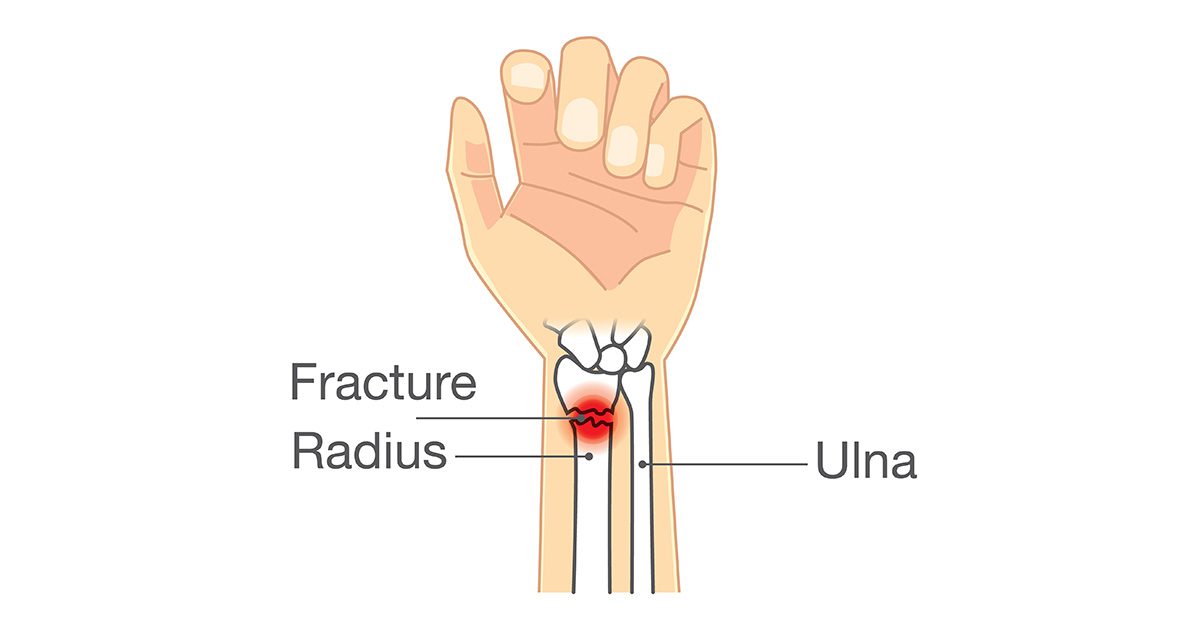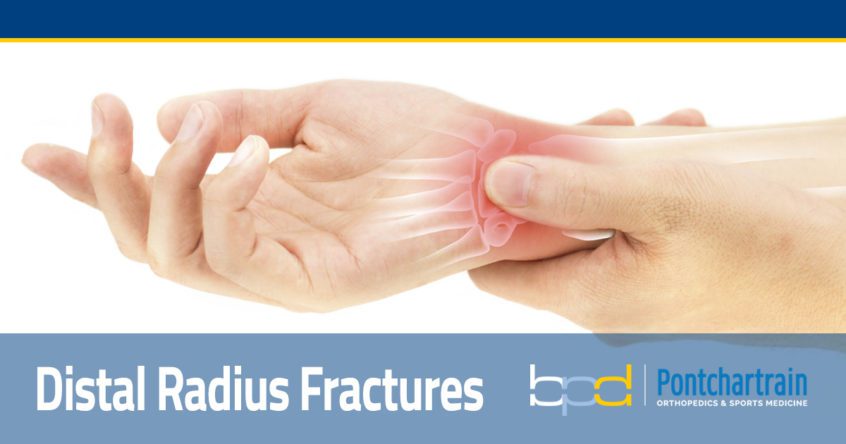What are Distal Radius Fractures?
The two bones of the forearm are called the ulna and radius. The radius is the larger of the two and is most commonly broken. When it is broken on its distal end (near the wrist), the fracture is called a distal radius fracture. The most common cause of distal radius fractures is falling on an outstretched arm. Patients with a fractured wrist will likely feel pain and tenderness at the site of the break and may see a bruise on the skin above the wrist. Moving the wrist may also cause difficulty if the distal radius has been fractured.

What Causes a Distal Radius Fracture?
Fractures to the distal radius typically result from a fall on the wrist or an accident where the wrist is hit or crushed. Contact sports often cause an excess of force to the distal radius, which can result in a fracture. This might occur when a football player is tackled and tries to stop a fall with their hand. Distal radius fractures can also occur as a result of a bicycle accident when a biker falls from their bike, or in a car crash where shrapnel crushes the hand and wrist.
How are Fractures Diagnosed?
Before a fracture can be treated, it needs to be properly diagnosed. A physical examination and x-rays are used to diagnose such fractures. Distal radius fractures are categorized into four types:
Extra-articular
This category of fracture is defined as a clean break of the distal radius that does not extend into the wrist joint.
Intra-articular
This type of distal fracture involves a clean break of the distal radius that also involves fracturing of the wrist joint.
Open
An open fracture is an injury where the bones of the wrist are breaking through the skin. Fractures of this type require immediate medical attention.
Comminuted
This is a type of fracture where the distal radius bone has splintered into multiple pieces of broken bone.
Treatment Options
Non-Surgical
Extra-articular fractures with good bone alignment are treated using non-surgical treatment. This is usually done with a splint and/or a cast to immobilize the bone while it heals. Intra-articular fractures can sometimes be treated this way, depending on the severity of the break. Open and comminuted fractures, however, should be treated using minimally invasive surgical techniques.
Surgical
Intra-articular, open, and comminuted fractures usually require surgical intervention. Regardless of the fracture type, the goal of surgery remains the same-- to restore bone alignment and anatomy by reducing and then fixating the fracture. Once the surgery is complete, the bones can then be kept in alignment with the aid of a cast.
Recovery Time
Because recovery following non-surgical and surgical treatment of distal radius fractures depends on the fracture and medical and social histories of the injured patient, recovery time is something that is best discussed during an appointment.

